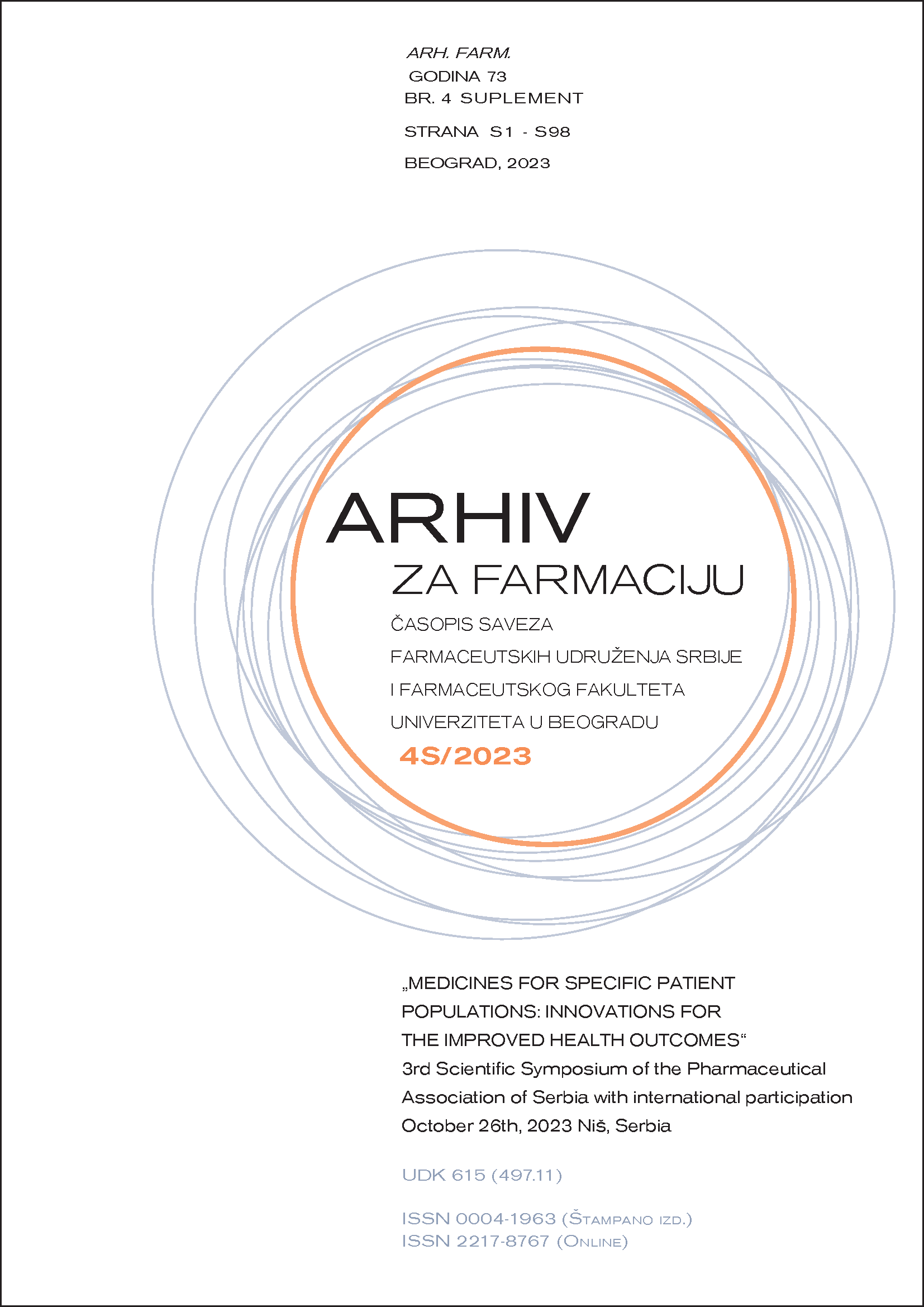CHEMICAL ANALYSIS AND ANTIMICROBIAL ACTIVITY OF ESSENTIAL OILS FROM WILD LAUREL OF NATIONAL PARK SKADAR LAKE, MONTENEGRO
Abstract
Laurus nobilis L., Lauraceae, popularly known as laurel, is a flowering, evergreen bush which grows wildly in most parts of Montenegro, and is often cultivated and used as an aromatic, flavoring spice and medicinal plant. The aim of this research was to analyze the chemical composition of the essential oil (EO) of fruit and leaf, and afterwards antibacterial and antifungal activity of EOs on the following strains: Staphylococcus aureus ATCC25923, Enterococcus faecalis ATCC29212, Bacillus subtilis ATCC6633 Escherichia coli ATCC25922, Klebsiella pneumoniae ATCC13083, Salmonella Abony NCTC6017, Pseudomonas aeruginosa ATCC27853 i Candida albicans ATCC10231. The qualitative and quantitative composition of the EOs of fruit and leaves was carried out by using a gas chromatographic analysis coupled with mass spectrometry (GC-MS). The EO of fruit was found to be rich 1,8-cineole (33.3%), α-terpinyl acetate (7.0%), α-pinene (5.8%), β-elemene (5.7%), sabinene (5.3%), β-pinene (4.0%), borneol (2.1%) and terpinene-4-ol (2.1%). The most important components identified in the leaves EO were 1,8-cineol (35.1%), α-terpinyl acetate (10.4%) and linalool (7.6%), among others, are in line with previous literature reports (1). In addition, the antibacterial and antifungal properties of leaf and fruit laurel EOs were examined according to the broth microdilution method. The fruit EO showed antibacterial and antifungal activities against almost all strains of the microorganisms tested, whereas the leaf EO was able to inhibit: Staphylococcus aureus ATCC25923, Enterococcus faecalis ATCC29212, Bacillus subtilis ATCC6633 and Candida albicans ATCC10231. Escherichia coli ATCC25922 was bacterial strain that showed the highest resistance to both tested laurel EOs. The results obtained herein for laurel EO and 1,8-cineole as its main constituent are in accordance with previous studies (2).
References
1. Fidan, H., Stefanova, G., Kostova, I., Stankov, S., Damyanova, S., Stoyanova, A. and Zheljazkov, V.D. Chemical composition and antimicrobial activity of Laurus nobilis L. essential oils from Bulgaria. Molecules 2019, 24(4), p.804.
2. Caputo, L.; Nazzaro, F.; Souza, L.F.; Aliberti, L.; De Martino, L.; Fratianni, F.; Coppola, R.; De Feo, V. Laurus nobilis: Composition of essential oil and its biological activities. Molecules 2017, 22(6), 930–941.

